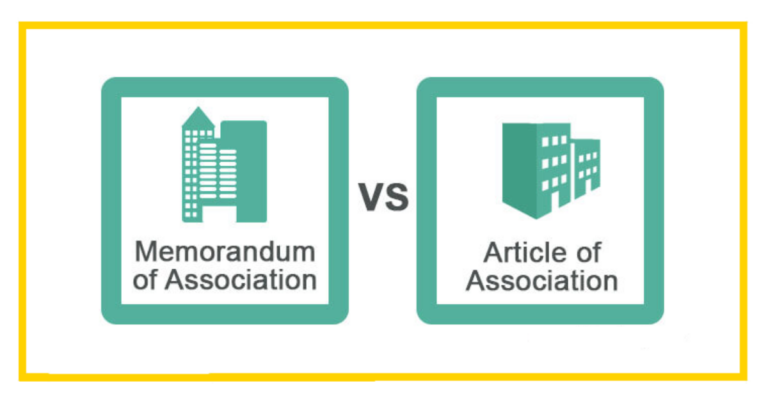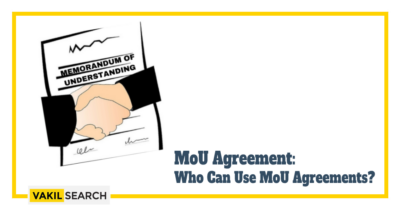Learn about the essential guidelines and examples of MoU for research collaboration. Ensure a successful partnership by following these tips and seeking legal advice from Vakilsearch.
A Memorandum of Understanding (MoU) is a formal document that outlines the terms and conditions of a partnership or collaboration between two or more parties. It serves as a preliminary agreement that sets out the framework for future collaboration. In the field of research, an MoU is an essential tool for formalising collaborations between institutions, universities, research centres, or organisations. This blog will provide guidelines and examples for drafting an MoU for research collaboration. It will cover important points, such as the purpose, scope, responsibilities, intellectual property, confidentiality, dispute resolution, and termination.
Purpose and Scope
The purpose of the MoU should be clearly stated and should define the objectives of the collaboration. It should also specify the scope of the research, including the duration, milestones, and expected outcomes. This will ensure that the parties have a shared understanding of the goals and expectations of the collaboration.
Responsibilities and Contributions
The MoU should outline the responsibilities and contributions of each party. This includes defining the roles and tasks of each party, the resources and funding they will provide, and the timeline for completion of tasks. It is important to ensure that the roles and responsibilities are clearly defined to avoid confusion and misunderstandings.
Intellectual Property
Intellectual property (IP) is a crucial aspect of research collaboration. The MoU should clearly define the ownership, management, and protection of the IP generated during the collaboration. It should also specify the conditions for the use, dissemination, and commercialisation of the IP.
Confidentiality
Confidentiality is an important consideration in research collaboration, particularly when dealing with sensitive data or proprietary information. The MoU should include a confidentiality clause that specifies the scope of confidentiality, the exceptions, and the remedies for breach of confidentiality. This will ensure that the parties understand their obligations and are held accountable if they violate the agreement.
Dispute Resolution
In the event of a dispute or disagreement, the MoU should include a clause outlining the process for resolving disputes. This may include mediation, arbitration, or litigation. It is important to have a clear dispute resolution process to avoid costly legal battles and damage to the collaboration.
Termination
The MoU should include a termination clause that outlines the circumstances under which the collaboration can be terminated, the notice period, and the consequences of termination. This will ensure that the parties understand the conditions under which the collaboration can be terminated and the consequences of doing so.
Funding and Budget
One of the most critical aspects of research collaboration is funding. The MoU should specify the funding sources, the amount of funding, and the budget for the collaboration. It should also outline the process for financial reporting, the management of funds, and the allocation of resources.
Project Management and Reporting
Effective project management is essential for the success of research collaboration. The MoU should outline the project management structure, including the appointment of a project manager, the roles and responsibilities of the project team, and the communication and reporting requirements. It should also specify the frequency and format of project reporting.
Ethical Considerations
Research collaboration should be conducted in accordance with ethical principles and guidelines. The MoU should specify the ethical considerations, including the protection of human subjects, the use of animals in research, and the management of conflicts of interest. It should also outline the process for obtaining ethical approval and the reporting requirements for ethical issues.
Publication and Dissemination of Results
The MoU should specify the conditions for the publication and dissemination of research results. This includes the authorship criteria, the timeline for publication, the journal selection criteria, and the requirements for open access publishing. It should also outline the process for data sharing and the management of intellectual property rights.
Collaborative Opportunities
The MoU Agreement should specify the opportunities for collaboration between the parties. This includes joint research projects, joint publications, joint funding applications, and joint conferences and workshops. It should also outline the process for identifying and pursuing new collaborative opportunities.
Examples of MoU for Research Collaboration
Example 1: MoU between University and Research Center
This MoU outlines the collaboration between a university and a research centre to conduct research on renewable energy. It includes the following sections:
- Purpose and scope
- Responsibilities and contributions
- Intellectual property
- Confidentiality
- Dispute resolution
- Termination
Example 2: MoU between Pharmaceutical Company and University
This MoU outlines the collaboration between a pharmaceutical company and a university to conduct research on a new drug. It includes the following sections:
- Purpose and scope
- Responsibilities and contributions
- Intellectual property
- Confidentiality
- Publication and dissemination of results
- Dispute resolution
- Termination
Conclusion
An MoU for research collaboration is an essential tool for formalising partnerships and collaborations in the field of research. By following these guidelines and examples, parties can ensure that their MoU includes all the necessary clauses and provisions to protect their interests and ensure a successful collaboration. It is important to remember that the MoU is a preliminary agreement and that the parties may need to revise it as the collaboration progresses. By working together and communicating effectively, the parties can ensure that their research collaboration is productive, innovative, and impactful. In addition to following these guidelines and examples, it is recommended to seek legal advice from a reliable source such as Vakilsearch to ensure that the MoU is legally binding and enforceable. Our legal experts can provide guidance and assistance in drafting, reviewing, and finalising the MoU. We also provide support in the event of any disputes or issues that may arise during the collaboration. By working with Vakilsearch, parties can have peace of mind knowing that their MoU is comprehensive, effective, and legally sound.
Read more,
- Benefits of a Memorandum of Understanding
- How does an MOU work?
- Process of a Memorandum of Understanding










